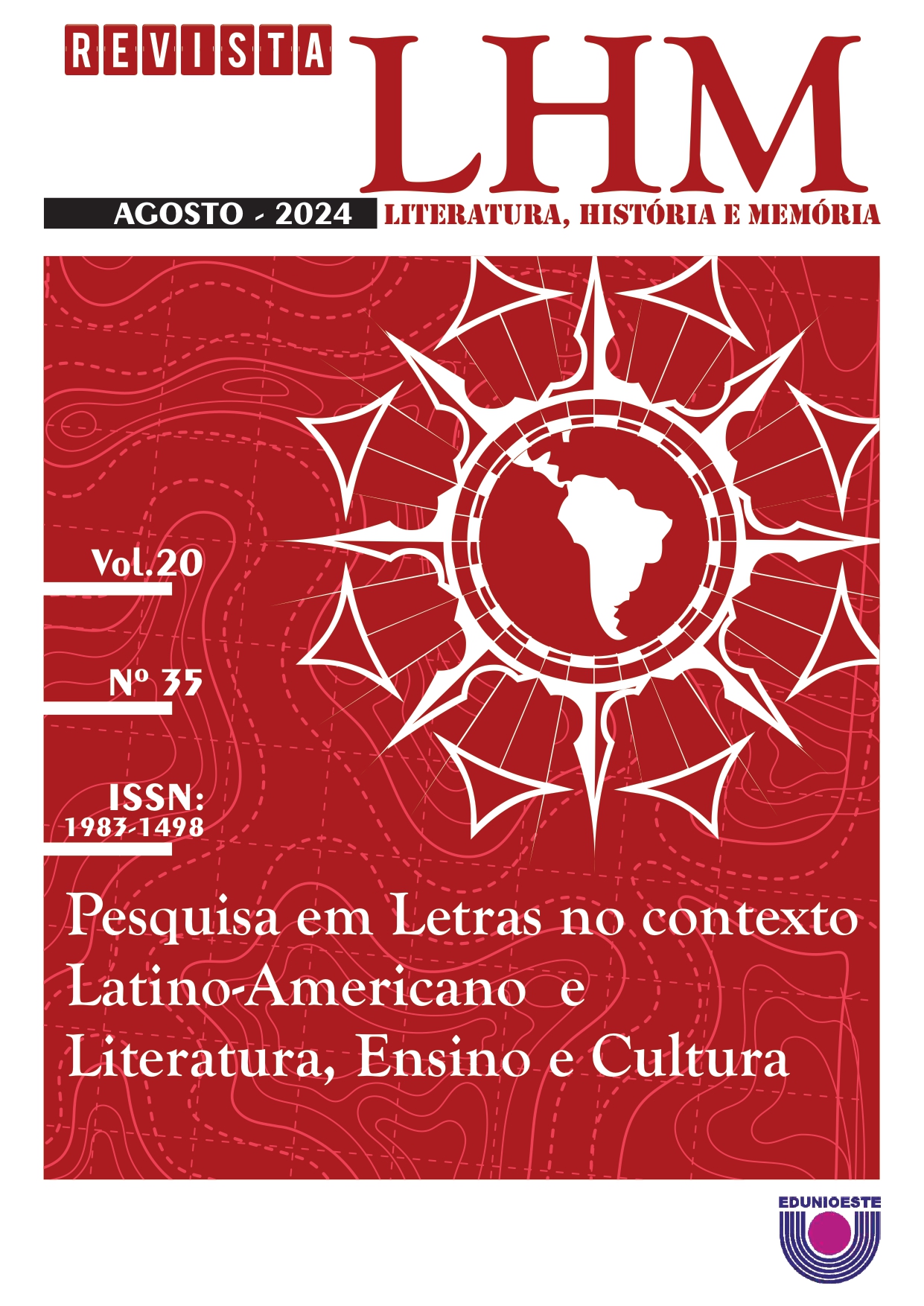Entre páginas e telas
Silêncio em A hora da estrela
DOI:
https://doi.org/10.48075/rlhm.v20i35.33338Resumo
Os silêncios circundam todo o Universo e desempenham papel significativo na comunicação, na História, na cultura. Eles fazem parte de toda e qualquer linguagem. Neste estudo, focalizamos principalmente a linguagem literária e a linguagem cinematográfica. Objetivamos verificar as ocorrências de silêncio e construir sentidos de forma comparatista tomando como objeto de estudo o romance brasileiro A hora da estrela (1977), de Clarice Lispector, e o filme homônimo (1985), dirigido por Suzana Amaral. Cada uma dessas formas artísticas, fazendo uso de recursos estéticos específicos, é tecida a partir de um grande contingente de silêncios que significam sempre. As atribuições de sentido a tais silêncios são, evidentemente, imprescindíveis para a compreensão da mensagem dessas narrativas artísticas. Para fundamentar as análises, convocamos estudos de diversos autores, relacionados ao silêncio, de entre os quais destacamos: David Le Breton (1999), Ione Marisa Menegolla (2003), Eni Puccinelli Orlandi (2007), Maria Lúcia Homem (2012), Luzia A. Berloffa Tofalini (2020), entre outros. Esperamos somar reflexões às discussões comparatistas entre as produções literárias e cinematográficas, especialmente no tocante aos silêncios construídos nas obras.
Downloads
Publicado
Como Citar
Edição
Seção
Licença

Este trabalho está licenciado sob uma licença Creative Commons Attribution-NonCommercial-ShareAlike 4.0 International License.
Aviso de Direito Autoral Creative Commons
Política para Periódicos de Acesso Livre
Autores que publicam nesta revista concordam com os seguintes termos:
1. Autores mantém os direitos autorais e concedem à revista o direito de primeira publicação, com o trabalho simultaneamente licenciado sob a Licença Creative Commons Attribution que permite o compartilhamento do trabalho com reconhecimento da autoria e publicação inicial nesta revista.2. Autores têm autorização para assumir contratos adicionais separadamente, para distribuição não-exclusiva da versão do trabalho publicada nesta revista (ex.: publicar em repositório institucional ou como capítulo de livro), com reconhecimento de autoria e publicação inicial nesta revista.
3. Autores têm permissão e são estimulados a publicar e distribuir seu trabalho online (ex.: em repositórios institucionais ou na sua página pessoal) a qualquer ponto antes ou durante o processo editorial, já que isso pode gerar alterações produtivas, bem como aumentar o impacto e a citação do trabalho publicado (Veja O Efeito do Acesso Livre).
Licença Creative Commons
Esta obra está licenciada com uma Licença Creative Commons Atribuição-NãoComercial-CompartilhaIgual 4.0 Internacional, o que permite compartilhar, copiar, distribuir, exibir, reproduzir, a totalidade ou partes desde que não tenha objetivo comercial e sejam citados os autores e a fonte.


